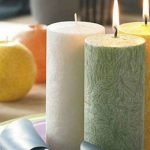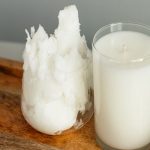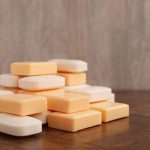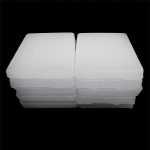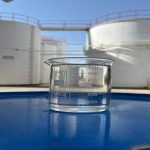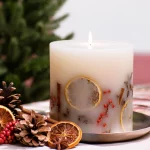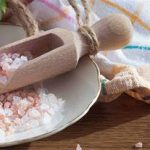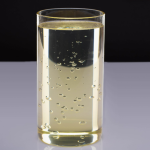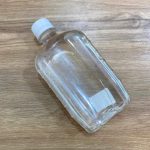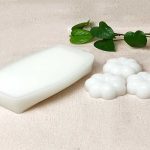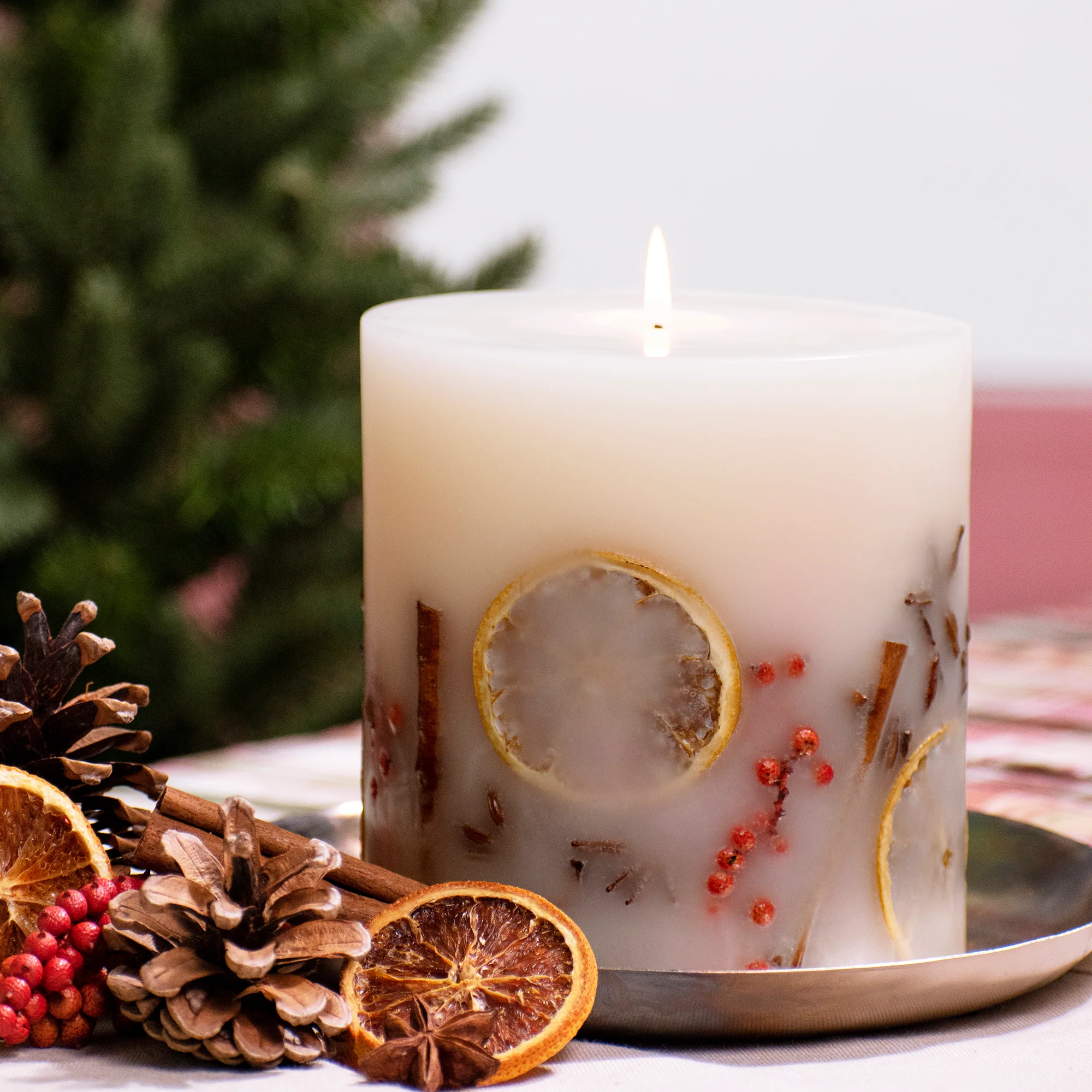
If you want to learn about solid paraffin suitable for candle making and become familiar with common candle making techniques, we recommend you don’t miss this article.
What is Solid Paraffin and Its Types:
Solid paraffin is a white, colorless to milky, and odorless substance derived from heavy petroleum cuts during the crude oil refining process. Due to its controllable melting point, high purity, and unique physical properties, it is widely
used as a base material in the candle, packaging, textile, rubber, pharmaceutical, and cosmetic industries.
Chemically, solid paraffin is a combination of long-chain alkanes that is solid at room temperature and melts between 42 to 60°C. It has hydrophobic properties, good adhesion, and the ability to retain scent and color in various
formulations.
Types of Solid Paraffin
Solid paraffin is generally classified in two ways:
Based on Oil Content:
-
Light Paraffin (Fully Refined / Low Oil – less than 0.5%):
Highest purity, odorless and colorless, suitable for hygienic, cosmetic, and premium candle applications. -
Semi-Refined Paraffin (Medium Oil – between 0.5% and 1.5%):
Suitable purity with a more economical price, usable in decorative, industrial, and general-purpose candles. -
High-Oil Paraffin (More than 3% oil):
Mostly used in rubber, wood, and insulation industries; generally not recommended for candle making.
Based on Melting Point:
-
Low Melting Point (42–50°C):
Suitable for faster-burning candles or low-temperature applications. -
Medium to High Melting Point (52–60°C):
Ideal for longer-lasting candles, better shaping, and stable performance in warmer environments.
What Type of Paraffin is Suitable for Candle Making:
To produce high-quality candles, choosing the right paraffin is one of the most critical factors. The paraffin used in candle making must have high purity, a suitable melting point, and uniform physical properties to ensure optimal
performance in shaping, burning, and scent diffusion.
-
High Purity (Fully Refined):
The best choice for candle making is fully refined paraffin with less than 0.5% oil content. This type is odorless, colorless, highly pure, and produces a clean and consistent flame without smoke. -
Controlled Melting Point:
Depending on the type of candle (container, molded, decorative, or industrial), a melting point between 52 and 60°C is recommended:
52–55°C for container candles
56–60°C for molded and decorative candles -
High Transparency and Color Absorption:
Quality paraffin should have high transparency and accept color and additives well to create an attractive appearance in colored or scented candles. -
Even Scent Retention and Release:
Suitable paraffin should effectively retain fragrance oils and release them evenly during burning. -
Clean Burn:
Candles made with quality paraffin should burn cleanly without soot, producing a stable and clean flame. Excess oil or impurities in paraffin lead to smoking and unpleasant odors. -
Thermal Stability and Shape Retention:
High-quality paraffin should retain its shape well after cooling, not crack, and remain stable at room temperature.
Key Points in the Candle Making Process:
Despite its simple appearance, candle making involves many technical and specialized considerations that directly affect product quality, consumer safety, and market sustainability. Paying attention to the following points can lead to
the production of high-quality, distinctive, and competitive candles in domestic and export markets:
-
Choosing the Right Raw Material
-
Use fully refined paraffin with less than 0.5% oil content
-
Consider melting point based on candle type
-
Include additives like color, fragrance, stearin, etc.
-
-
Melting and Pouring Temperature Control
-
Paraffin should be melted slowly (preferably between 70–90°C) to avoid bubbles or fragrance evaporation
-
Pouring temperature should be controlled (typically between 55–65°C), as pouring too hot causes cracking and sinking.
-
-
Choosing the Right Wick
-
The wick’s type, thickness, and material must match the candle’s diameter and type
-
Incorrect wick causes smoking, flame extinguishing, or incomplete burning
-
Reinforced wicks are recommended for scented or colored candles.
-
-
Adding Fragrance and Color
-
Fragrance should be added at the correct temperature (usually below 65°C) to avoid evaporation
-
Use candle-specific dyes (not food or textile dyes) for color stability.
-
-
Molding and Cooling
-
Molds must be clean and dry; high-quality metal or silicone molds are recommended
-
Cooling should occur naturally and gradually; rapid cooling causes cracking or surface wrinkling.
-
-
Burn Test
-
Each production batch should be burn-tested to check flame performance, soot levels, burn time, and fragrance release
-
These tests help identify and correct issues before market release.
-
-
Packaging and Storage
-
Candles must be stored away from direct sunlight and heat to maintain shape
-
Elegant and durable packaging, especially for exports, plays a key role in attracting customers.
-
What Are Common Candle Making Methods?
Candle making is done through various methods, each with its own advantages and challenges depending on production scale, candle type, and market goals. Choosing the right method greatly affects the final product’s quality,
efficiency, and cost.
-
Manual Candle Making (Workshop / Home-Based)
-
Features:
Suitable for limited and artistic production
Simple tools (melting pot, mold, wick, dye, fragrance)
Ideal for startups, decorative and custom candles -
Advantages:
High flexibility in design and scent/color combinations
Low initial investment
Attractive for luxury or gift markets -
Disadvantages:
Low production capacity
Higher labor demand
Less consistency in final products
-
-
Semi-Industrial Candle Making
-
Features:
Combination of manual and mechanical processes
Use of basic equipment like electric mold pourers, cooling tables, and wick setters
Suitable for medium producers with regional or online markets -
Advantages:
Higher capacity than manual
Better quality control
Ideal for business development and personal branding -
Disadvantages:
Requires dedicated workshop space
Higher costs than home production
Requires more technical skills
-
-
Industrial Candle Making (Fully Automatic)
-
Features:
Uses fully automatic specialized machinery such as candle extruders, mold machines, automatic wick setters, and packaging lines
Suitable for mass production and export -
Advantages:
Very high production capacity
Full consistency in products
Significant reduction in unit cost at high volumes
Suitable for large-scale retail and major brands -
Disadvantages:
High initial investment
Requires industrial infrastructure (3-phase power, ventilation, storage)
Needs skilled personnel for machine maintenance and operation
-
Summary
Choosing the right candle making method should be based on:
-
Initial investment capacity
-
Target market (household, artistic, industrial, or export)
-
Desired production capacity
-
Technical skill level of the production team
Where to Buy Candle-Making Paraffin?
Selecting a reputable supplier for candle-making paraffin plays a crucial role in final product quality, production consistency, and the producer’s brand credibility. In today’s market, consistent quality of raw materials and regular access
to paraffin with precise specifications is a strategic necessity for producers and traders.
Key Criteria for Choosing a Paraffin Supplier:
-
Purity and Uniformity in Chemical Composition:
The supplier must consistently provide paraffin with stable oil content and melting point in every batch. -
Quality Certificates and Technical Analysis:
Having an official Certificate of Analysis (COA) is essential to ensure compliance with candle-making standards. -
Supply Stability and Fast Delivery Capability:
Ongoing availability and timely delivery prevent production line disruptions. -
Competitive Pricing with After-Sales Service:
Reasonable pricing, along with technical consultation, professional packaging, and logistical support, is a sign of a trustworthy business partner.
PetroVil: Reliable Supplier of Candle-Making Paraffin with Export Quality
PetroVil, as a reputable brand in the paraffin supply field, focuses on quality, supply stability, and competitive pricing, making it a professional choice for candle-making producers and traders.
Features of Petroil Paraffin:
-
High purity (Fully Refined), suitable for luxury and decorative candles
-
Customizable by oil content and melting point according to customer needs
-
Official Certificate of Analysis included with each shipment
-
Available for retail and bulk supply in domestic and export markets
-
Fast delivery and secure packaging
Petroil: Your Partner for Sustainable and Competitive Production




